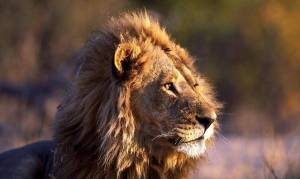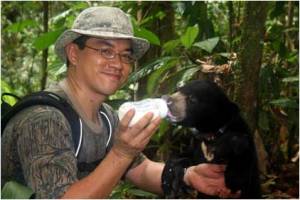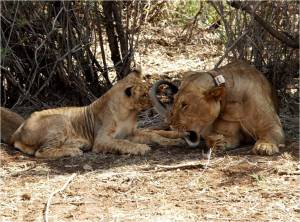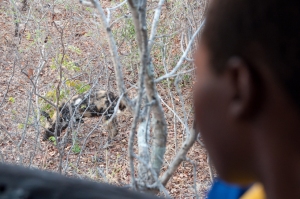As thinking people, we pride ourselves on having the ability to create solutions to the problems that present themselves. Sometimes the answer we seek is simple and straight forward, allowing us a quick fix – but other times, as with efforts to protect wildlife and wild places – finding the resolution often requires delving deep into the issue at hand and starting back at square one. Such is the approach of the African Predator Conservation Research Organization. These wildlife warriors are modern day pioneers on the front lines of conservation – creating positive change for animals in a fight against extinction.
resolution often requires delving deep into the issue at hand and starting back at square one. Such is the approach of the African Predator Conservation Research Organization. These wildlife warriors are modern day pioneers on the front lines of conservation – creating positive change for animals in a fight against extinction.
Located in the Kwando/Linyanti region of Africa, a diverse group of researchers have committed themselves to venturing out into this untamed landscape in an effort to determine the role that disease, genetics, reproductive potential, nutrition and pathology all play in the survivability of these species. Veterinary professionals Michael Briggs and Beth Ament routinely set out under the cover of darkness in search of carnivores. While drawing these animals to the truck with the sounds of a wounded buffalo blaring from a portable CD player may seem rather low-tech in today’s modern world, it’s an approach that’s been highly effective. Lions, hyenas, leopards, cheetahs, jackals and wild dogs often come perilously close to the vehicle. 
With an eye for the animal’s ultimate safety and the skillful placement of a tranquilizer dart, Briggs and Ament sedate the animal just long enough to conduct a thorough exam and extract blood and fecal samples to analyze back at the laboratory. While there have been no serious incidents to date, collecting information from these animals can be a risky business. There have been tense moments where it appeared that an animal might charge the truck. When asked what brings an Idaho native to work in the wilds of Africa, Briggs jokingly replies “stupidity.” Yet it’s soon obvious that this a labor of love for the doctor, “This is an awesome place, I’ve been doing this a long time and it’s just magic.” Although some areas of Africa such as Zambia and Mozambique are becoming more open-minded toward conservation initiatives, creating long-term policy change in this very political area may just require a little magic. “We see our goal as providing hard data – and sometimes advice – but the governments there still want to measure how much direct influence outsiders have on decision-making.“ says Briggs.
Despite the dangers and challenges of such work, the valuable information gained from APCRO’s research will provide a baseline for the creation of effective conservation initiatives in the future.  It’s hoped that these results will yield long-term gains for not just one, but several species of carnivores. This big picture approach is a unique one. While projects abound to save a single species, APCRO recognizes that these varied carnivore species don’t live in isolation – but instead depend on and compete with one another. This makes the effects of disease and the animal’s unique genetic make-up vital variable in the ultimate survival of all carnivores. What affects one species may affect the others – and APCRO is taking the first steps toward supplying definitive answers to this important question. For more information about this organization’s research, please visit http://apcro.org/.
It’s hoped that these results will yield long-term gains for not just one, but several species of carnivores. This big picture approach is a unique one. While projects abound to save a single species, APCRO recognizes that these varied carnivore species don’t live in isolation – but instead depend on and compete with one another. This makes the effects of disease and the animal’s unique genetic make-up vital variable in the ultimate survival of all carnivores. What affects one species may affect the others – and APCRO is taking the first steps toward supplying definitive answers to this important question. For more information about this organization’s research, please visit http://apcro.org/.
**Please note – APCRO is not a SeaWorld & Busch Gardens Fund supported project.**








